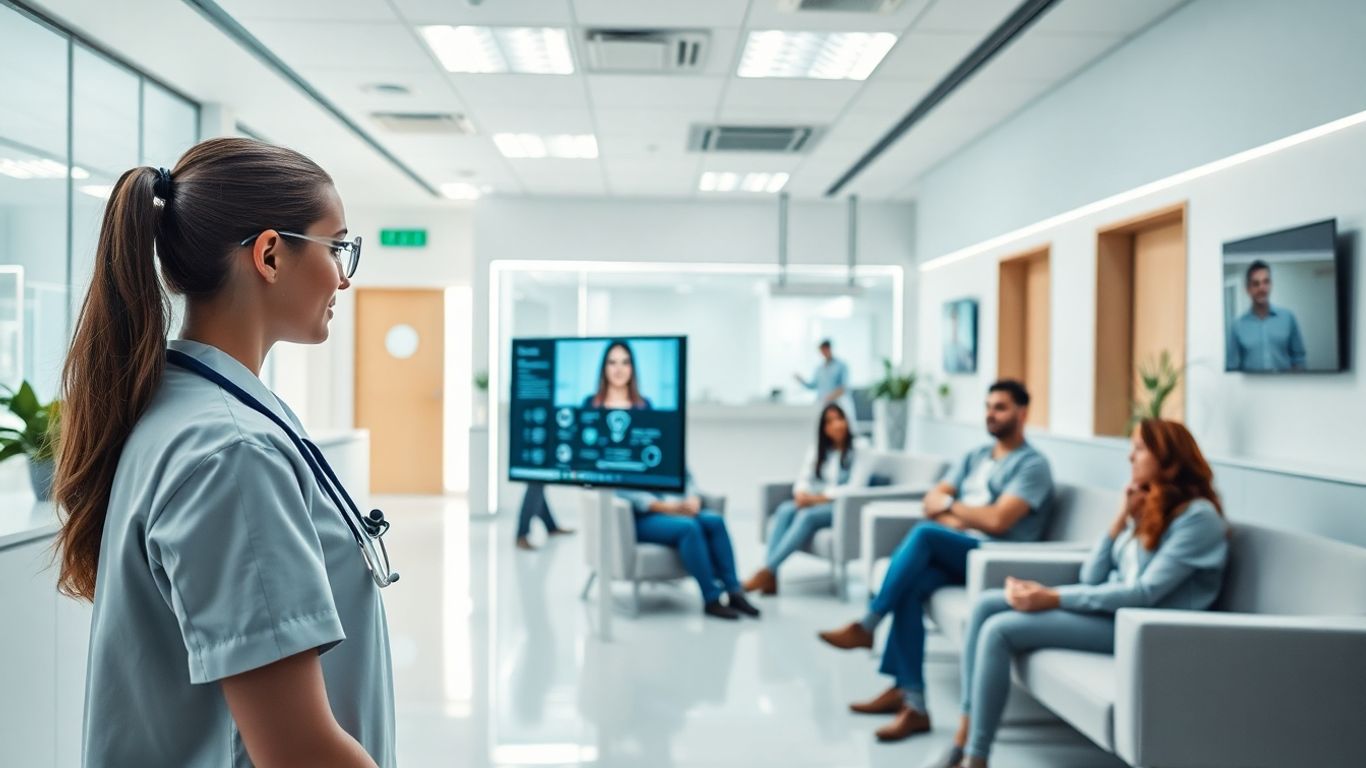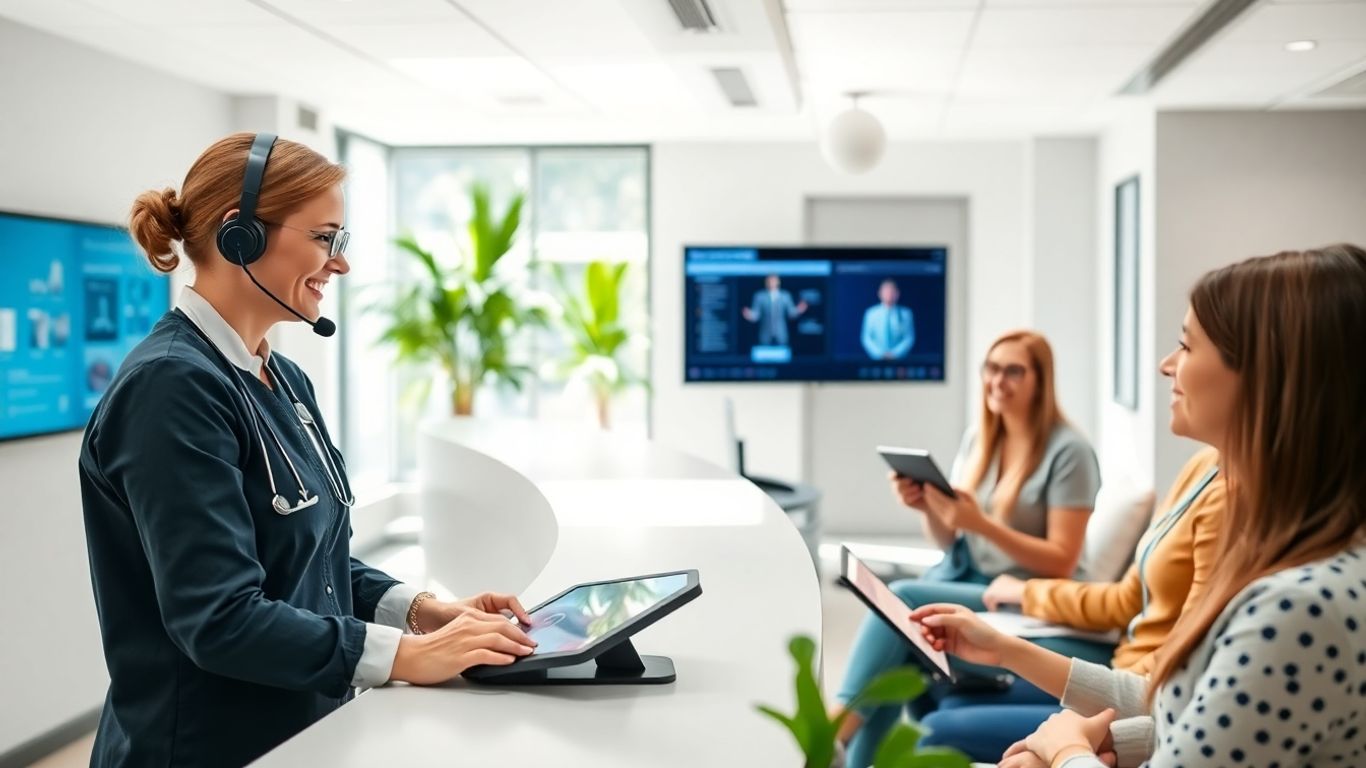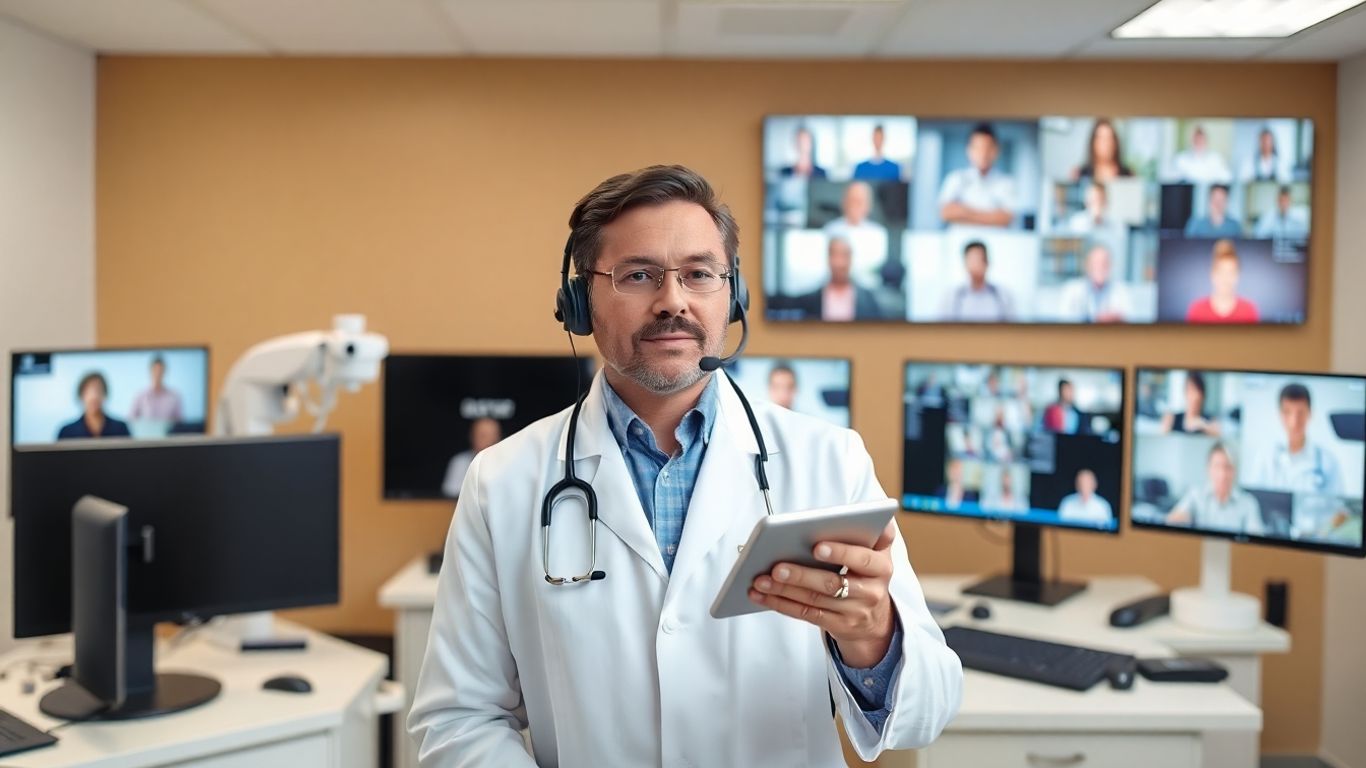Ever tried calling your doctor after hours, only to hit voicemail or wait endlessly on hold? It's frustrating. In 2025, this is changing fast. A medical answering service is now more than just a way to catch missed calls—it’s becoming the backbone of patient communication. With smarter tech, clinics can help patients day or night, cut down on confusion, and make every call count. Here’s a look at how a medical answering service is making patient care simpler and better this year.
There's something that always hangs over clinics: the moment a patient calls after you lock the doors. They’ve got a question at midnight or pain at seven in the morning, and all they get is a dead line or a voicemail box. This used to be acceptable—patients would wait or try again. Now, it’s not. People want answers, and they want them any time.
A medical answering service changes what happens after hours. Instead of letting calls pile up till the next day, a real human (or a sharp AI tool) picks up. The ripple effect is big: less stress for staff, fewer annoyed or anxious patients, and a smoother-running practice when morning comes.
No one likes the feeling of missing something important, especially when it involves their health. With a 24/7 answering service, every call gets picked up—no more lost messages, no more time wasted on callbacks. The system doesn’t care about weekends or holidays. This sort of reliability makes a difference for patients who need reassurance outside the normal 9-to-5 grind.
Table: Typical Missed Calls Before and After 24/7 Answering Service
The shift is clear: every patient who calls gets a response, whether it’s midnight or Sunday. For clinics aiming to improve patient satisfaction, this is a simple win—something even dental clinics prioritize as part of delivering exceptional customer service.
Not all calls are the same. A mother worried about her child’s fever shouldn’t wait in the same queue as someone confirming parking info. With smart triage, calls are filtered and prioritized:
This division streamlines work for everyone involved. Staff come in the next day to a sorted, actionable list—no surprises and zero crisis holdovers.
When every call is sorted sensibly, patients feel heard, and providers regain time for higher priorities.
Missed appointments cost not just dollars but trust. Medical answering services take on the grunt work of reminders, rescheduling, and confirming appointments. Here’s how the workflow tightens up:
This keeps the schedule full and organized. Patients feel like someone has their back, and staff aren’t left scrambling on Monday morning. Over time, reduced no-shows mean fewer wasted slots and a healthier bottom line.
It’s all about making the patient experience as smooth and predictable as possible—because frustrated people aren’t going to recommend your clinic, or stick around for next year’s checkup.
If you’ve ever worked in a busy clinic, you know the pain of missed calls. Each one isn’t just a lost ring; it might mean a delayed medication, a confused patient, or even a complaint. The numbers don’t lie:
Every call that slips through the cracks is a missed opportunity, sometimes with real consequences. It adds up quickly—patients might leave bad reviews or simply never come back. That’s not just numbers on a spreadsheet, that’s community trust walking out the door.
Patients don’t want a scavenger hunt when they call their doctor. They want an answer, a solution, or maybe just a little reassurance. A medical answering service should be like a well-organized front desk: clear, quick, and helpful.
A straightforward service, like 24/7 multilingual support, makes it easier for everyone—patients and staff alike. Clarity breeds trust. The more transparent the process, the more likely patients are to come back, refer friends, and write positive reviews.
Simplicity isn’t a buzzword—it’s how you avoid frantic callbacks and misunderstood voicemails. In a clinic, that can change everything.
Simplicity shouldn’t stop at the phone line. Good systems respect time. Here’s what that looks like in real life:
That means no more staff scrambling to return after-hours messages, and no more confused patients. The best tools are the ones you barely notice—they just fit into your day, and you stop worrying about them. That’s what wins in healthcare communication.

In 2025, the way patients reach their clinics is shifting. The old system—long hold times, robotic menus—feels clunky next to AI-powered medical answering services. With real-time replies and a natural flow, these systems are setting new expectations. If you’ve ever waited for someone to pick up as your anxiety ticks up, you know why this matters.
Most callers just want a quick answer. An AI receptionist lives in milliseconds, not minutes. Instead of waiting for someone to transfer your call, the AI listens, understands, and speaks right back. The difference is clear:
This speed does more than save time: it creates calmer, more confident patients—even for basic requests. Real-time response means a patient who’s on edge for test results doesn’t sit stewing on hold for 10 minutes. That changes outcomes and loyalty.
It’s not enough to just answer a call. People speak casually, use slang, make mistakes. The magic now is how medical answering AI—using advanced models, like those you’ll find with AI receptionist solutions that handle calls and texts 24/7—grasps intent, not just keywords:
The result? Fewer misunderstandings and a more human-feeling support, even though it’s all software handling the call.
Let’s be honest: waiting for anything is stressful, but waiting for a nurse to call back about a child’s fever can feel endless.
With AI-powered responses from always-on platforms like My AI Front Desk's 24/7 receptionist, patients receive instant answers to routine questions—clinic hours, medication reminders, coming appointment confirmations—any time, day or night. If the request is more urgent or unusual, the system instantly escalates the issue.
When answers come in seconds, not hours, it gives patients control and clarity. That’s not just convenient; it’s better care.
AI medical answering services in 2025 aren’t cold or mechanical. They’re becoming the new standard for reliability—with a side effect of less stress, smoother practice operations, and healthier, happier patients.

Tying together all the systems in your clinic can feel like plugging too many cords into a small outlet. Let’s be straightforward: a good medical answering service should cut down on busywork, not add another thing to your to-do list.
The most effective answering services talk to your EHR, CRM, and calendar in real time, so there’s no extra data entry or risk of forgetting something. Imagine a caller books an appointment—the slot appears instantly in your patient schedule. If someone needs a follow-up, a task appears in the right staff member's to-do list. This kind of sync happens because modern services use smart APIs that create a two-way street for information:
The less your staff has to double-handle information, the less they get interrupted—and the more patients feel the effects.
What most clinics need isn't just extra hands but smarter movement of info. Automated workflows let you:
Most of this happens without human touch, so nothing is missed—even when things get busy.
Zapier isn’t some obscure tech—it's the glue for thousands of apps your team already uses. That means everything from the phone system to your task manager can work together. Here’s what this looks like day-to-day:
A few connections and what once took five different workflows or paperwork now just happens while you focus on patients. Integration, when done right, means less burnout for staff and calmer days for everyone in your clinic.
Healthcare is full of small moments where something simple goes wrong: names get mixed up, messages go to the wrong nurse, or a note vanishes right before a busy clinic day. Most of the time, it’s not the system breaking down—it’s a person just getting overwhelmed. A solid medical answering service sheds a whole layer of human error.
Here’s what shifts with automation:
The result: fewer headaches for everyone, and the chance to actually follow up with every patient, every time. This is the kind of reliable background support that helps clinics, dental offices, or anyone dealing with patient contact stay on track.
The idea of data privacy isn’t just paperwork. Patients now expect that their information—what medication they take, what appointments they schedule—won’t land in the wrong inbox. Here’s where HIPAA compliance really matters.
Teams that care about privacy create something similar to strong, personalized relationships, where trust drives care decisions. With an answering service, privacy rules are enforced automatically, not just because someone remembered today.
Ever tried to figure out what happened with a patient’s call last week? Good luck if there’s no detailed log. With a proper answering service,
The bottom line:
In 2025, patients notice the difference almost immediately. When the system is clean and secure behind the scenes, clinics can focus on actual care instead of chasing paperwork or fighting fires that never needed to start.

Every patient wants to feel like they matter—like their call isn’t just another ticket in a system. The irony is, as clinics get busier, it becomes tougher to deliver that personal experience everyone wants. A modern medical answering service, though, can flip the script. What used to be only possible for private practices is now available to everyone, at any size. Here’s how that looks on the ground.
Most people are skeptical that machines can be empathetic. But give a system access to real human interactions, train it on thousands of real situations, and suddenly those little touches—confirming info, repeating back answers, actually acknowledging distress—aren’t lost.
A well-tuned answering service doesn’t just relay messages. It notices the difference between routine and urgent, gives reassurance instantly, and always responds with the right tone.
For most callers, the thing that matters most is being heard, even if they’re not speaking to a human. If they don’t feel rushed or dismissed, the trust builds fast.
You don’t really know how frustrating healthcare can be until you’ve tried making an appointment in a language you barely speak. With properly set-up answering services, that barrier starts to shrink. Smart phone systems today:
This means clinics in multicultural neighborhoods don’t have to choose which patients get better service. Everybody gets the same shot at being understood—from the beginning.
Growth used to mean giving up on the small touches. As the patient list grows, corners get cut. Modern medical answering services are designed so scale doesn’t breed sloppiness.
Let’s break it down:
Personalized care doesn’t have to end when the phones get busy. In fact, with the right answering service—one built for reliability, as described in broad client communication improvements—every patient feels like the only patient, no matter how many are calling.
Data isn’t just numbers on a dashboard. In 2025, call data from your medical answering service is the raw ore for real clinical improvements. When every patient call, question, complaint, or cancellation is instantly logged and structured, you start to see trends other clinics miss. You get honest feedback, not just survey responses. Suddenly, your front desk conversations become a well of insight.
Let’s be honest: Nobody remembers every call. Systems do. Modern services track every interaction—time of day, request type, common questions, missed opportunities, even emotional tone. Here's what's usually captured:
Small tweaks emerge: maybe one phrase used by staff leads to more missed appointments, or a surge in after-hours calls signals a gap in daytime care.
When you start looking at every conversation, patterns jump out. Maybe lots of callers have the same insurance confusion. Maybe late afternoon spikes in calls always come from the same age group. Some worries never even reach the doctor because they're handled up front.
That kind of data feedback loop is how smart clinics get ahead of patient frustration and regulatory headaches.
When you get granular, you stop managing by luck—you start managing by facts. The surprises aren’t always fun, but fixing them is what moves the needle.
Actual healthcare gets better when front-line data gets upstream. Real-time call analytics should loop back to everyone who can act. For example:
Some clinics even connect call data to their outcomes data (like hospital readmissions or no-show rates). It’s not tech wizardry—it’s about tightening the gap between what patients say and what the clinic actually changes.
In the end, the right answering service won’t just pick up the phone—it’ll quietly change how you understand and help every caller, no matter how busy the day gets.
See how smart data can change the way you care for patients. Get clear, simple insights that help you make better choices every day. Want to learn how easy it is to stay connected and organized? Check out our website to see how Frontdesk can help you never miss an important call again.
Medical answering services in 2025 aren’t just a nice-to-have—they’re becoming the backbone of patient communication. The old way of handling calls—missed messages, long hold times, and after-hours black holes—just doesn’t cut it anymore. Patients expect answers now, not tomorrow. And clinics can’t afford to lose trust or let things slip through the cracks.
What’s changed is the technology. AI-powered systems are fast, accurate, and always on. They don’t get tired or distracted. They can handle routine questions, schedule appointments, and even know when to escalate a call to a real person. That means fewer mistakes, less stress for staff, and happier patients who feel heard.
It’s not magic. It’s just a better way to run things. If you’re running a medical practice and still relying on voicemail or overworked front desk staff, it might be time to rethink your setup. The clinics that adapt will keep their patients—and probably sleep a little better at night, too.
A medical answering service is a system that answers calls for clinics or doctors, especially after hours. It helps patients by making sure their calls are always answered, their questions are heard, and urgent issues are sent to the right people. This means patients get help anytime, not just during office hours.
An AI-powered answering service uses smart technology to understand what people say and respond quickly. Unlike regular services that might use only humans or simple menus, AI can answer questions, send reminders, and even text information to patients in real-time. It works 24/7 and can handle lots of calls at once without getting tired.
Yes, good medical answering services follow strict rules to keep your information private and safe. They use secure systems and follow HIPAA guidelines, which are laws that protect your health data. Calls and messages are recorded safely so only the right people can see them.
Many modern medical answering services offer support in more than one language. This means patients who speak different languages can get help and information in the language they are most comfortable with, making healthcare easier for everyone.
Answering services can send reminders for appointments and let patients reschedule easily. This helps reduce the number of missed appointments because patients get quick reminders and can change their plans if needed, keeping the clinic’s schedule running smoothly.
No, setting up a modern medical answering service is usually simple. Many services are designed to be easy to start, with step-by-step instructions and no need for special tech skills. Some even let clinics connect their current systems for scheduling or records, making everything work together smoothly.
Start your free trial for My AI Front Desk today, it takes minutes to setup!








